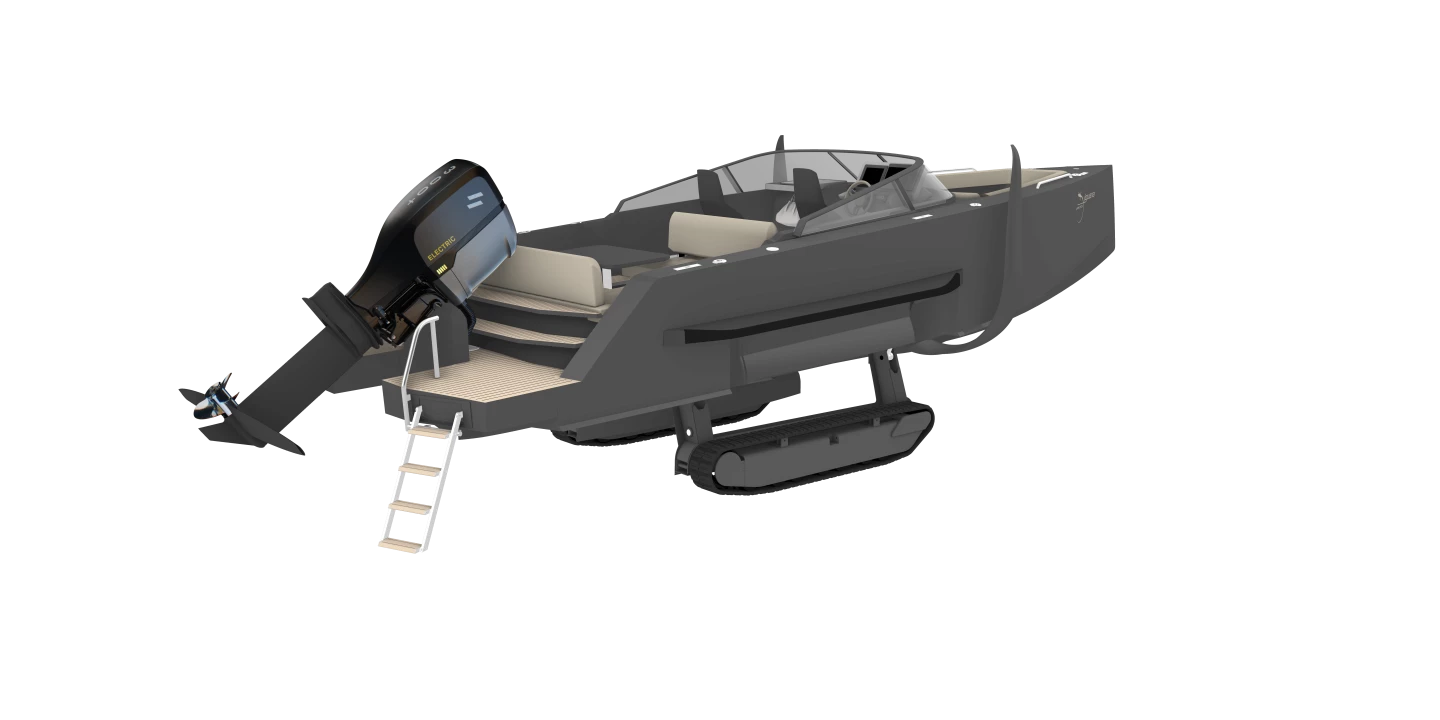We've been following the developments of amphibious craft from France's Iguana Yachts for over a decade – from tenders to taxis to sprinters, all rolling to the water's edge on retractable caterpillar tracks. Now the company is looking to fly above the waves as well, with the launch of the Iguana Foiler.
We're no stranger to foiling electric boats of course, but one that can rumble down the beach or lakeside on motorized treads adds even more versatility to the energy efficient formula.
Amphibious boats in general are reckoned easier to manage and operate since owners don't need expensive heavy infrastructure like ports or docks, and as they don't spend all of their lives on the water, they should also be easier to maintain and clean.
Responding to customer demand for an electric Iguana, the company unveiled the world's first amphibious electric foiling boat during the Cannes Yachting Festival earlier this month.

Iguana has leaned on long-time associates Fritsch and Durisotti for the overall aesthetics of the eight-person luxury e-boat, including an all-around windshield above the console and plush seating in the bow.
The company has worked with industry experts Caponnetto-Hueber on the patented surface-piercing foil design for the promise of a safe and stable ride, plus the ability to fold up the L-shaped front foils when maneuvering in harbors or out in very choppy conditions.

For the 10-m-long (~33 ft) Foiler's outboard, Norway's Evoy was tapped for a 300-hp (~220-kW) motor fitted with a T-foil for up to 30 knots on the water, with the 120-kWh Li-ion battery packs reported good for a per-charge range of up to 50 miles (80+ km) at a cruising speed of 22 knots.
While the boat is out on the water, the caterpillar tracks are drawn up into the hull for minimal impact on performance, but the landing gear can be deployed in just eight seconds to drive the Foiler onto the beach to crawl along at up to 4 mph (6.5 km/h).
Pricing has not been revealed at this point, but Iguana is currently accepting direct enquiries from potential customers.
Source: Iguana Yachts








